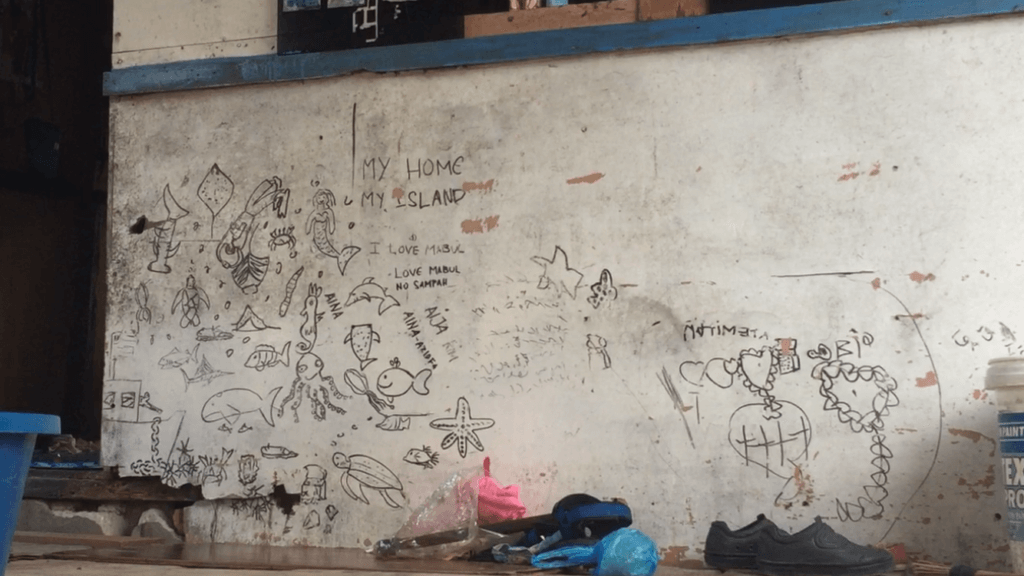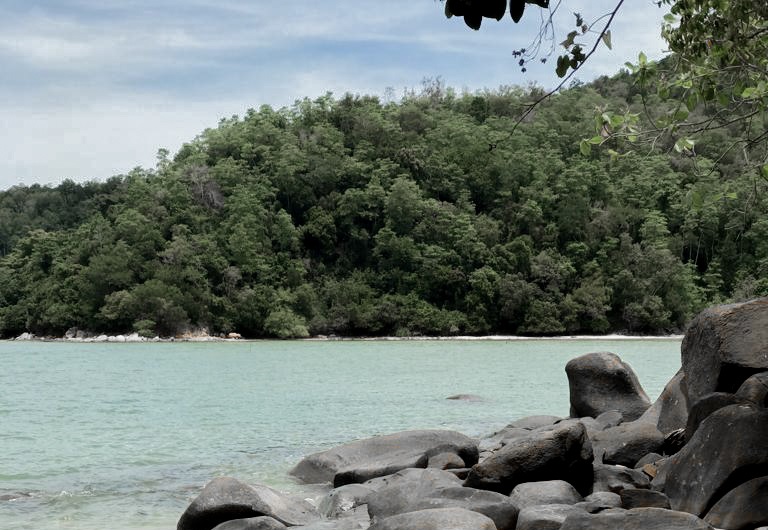The soothing sounds of the peaceful ocean and stunning hill views seemed to welcome our visit. Cows and buffaloes can be seen on the road and near their houses. The village head Encik Sining Lakim, and others greeted our arrival with Selamat Datang. A few shy gentlemen awkwardly stood a few feet away and humorous villagers created a comfortable atmosphere. I was secretly envious of their approachable manner and friendly personality, that beautiful glowing chocolate skin, and just imagine waking up to that dramatic backdrop every day.

This picturesque village with an area of 600 acres known as Kampung Pituru Laut is located in Kota Belud, Sabah. The name comes from a type of tree that grows on the beach known as Pituru or tohunon. It has a population of about 305 including those who working in the city. All of them are Muslims, representing a mixture of two ethnicities namely the Bajau Sama and Dusun. Their livelihoods as fishermen were apparent by the fishing nets that hung on the sides of their huts.
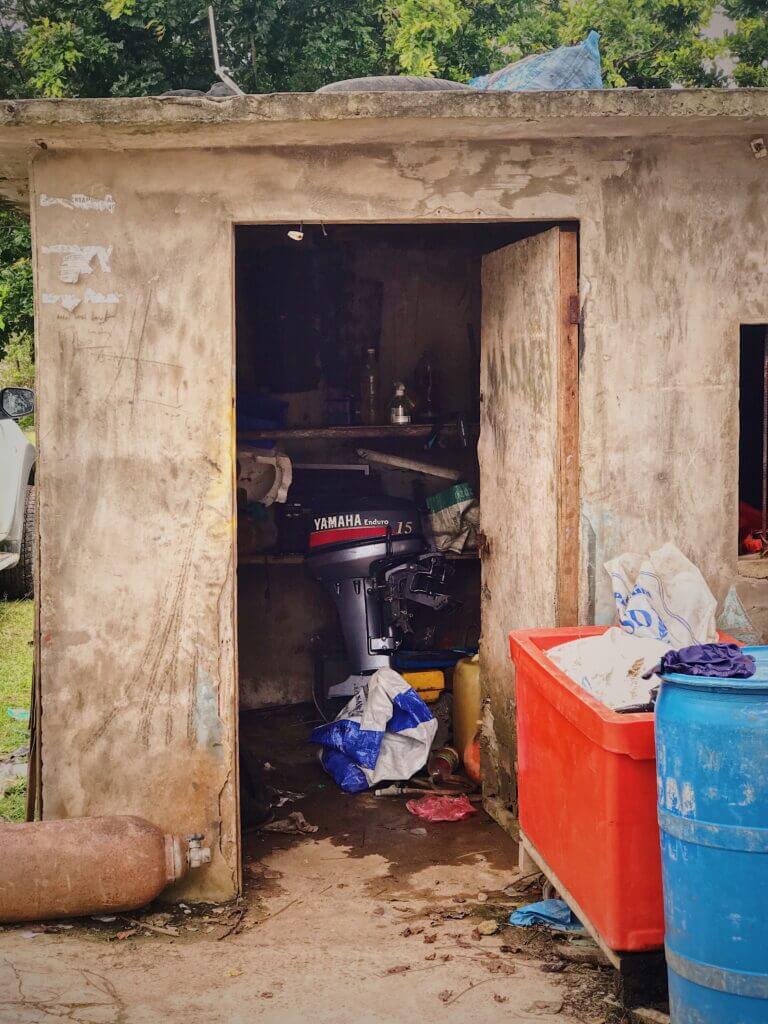
The village head took us on a tour while explaining about their local community which depends on fishing and agriculture as a source of income. In the beginning, they used paddles to row boats or a raft made of bamboo. This traditional method is not only slow but requires a lot of energy. In the present circumstances, the fishermen have to go in deep sea waters as the fish population has been declining since year 2000. Nowadays, some of them own engine-powered boats. However, profits from selling a fish could not cover operating costs due to rising fuel prices. Same goes for the cost of repairs in the event of any damage.
It was a grievous revelation of the hidden stories of Pituru’s community that drowned out a great first impression of mine.
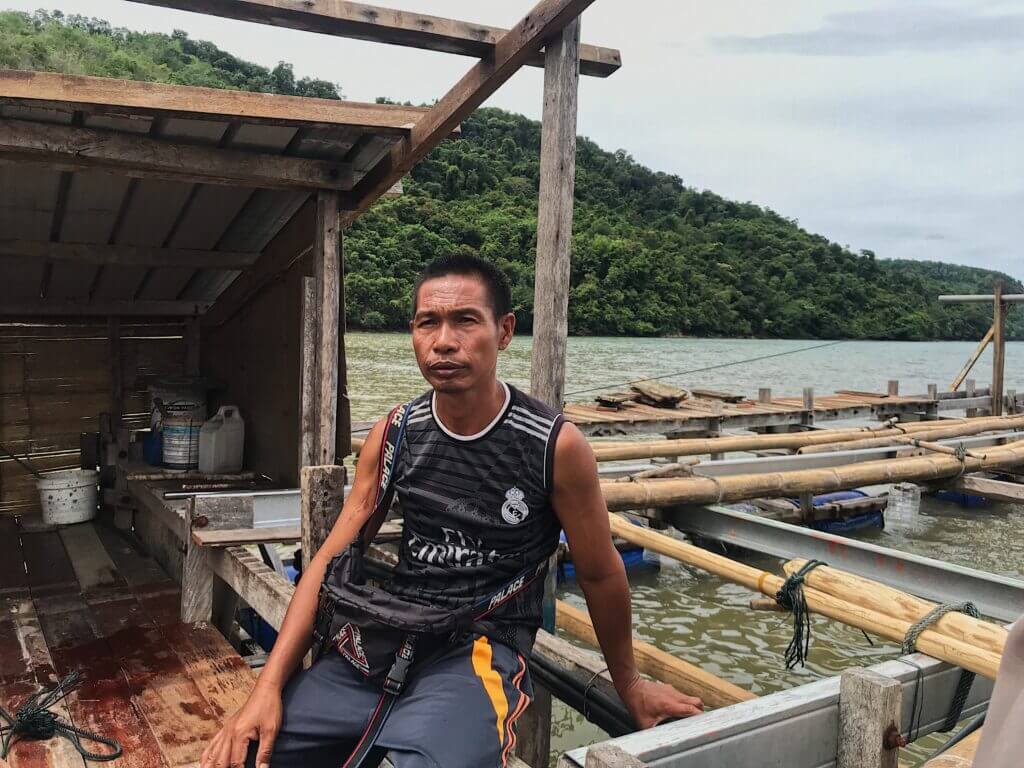
We paid close attention as they continued to share their challenges and concerns. While doing so, I looked around and saw a huge fishing net out at sea. The Bagang or bagan is a cage or floating platform in the sea originating from Indonesia that operates using nets and lights to attract anchovies, fish, squid and shrimp. Before this, I remember hearing about the about stationary lift net (Bagang tancap) where the catch would be transported to land by boat; it was static and done at night. Usually, there is a roller to lower and lift the net. Encik Lung, a father of three said they tried to build “bagang tancap” but failed due to heavy wind and waves. Their alternative was building a bagang that resembles a raft made up of blue tanks as buoys, metal, wooden material, bamboo and nets placed underneath. This kind of lift net moved in location where fish are predicted. A bagang costs around RM15,000 depending on its size.
Countless issues are buried in adaptability. Some genuine desire masked with hearty laughter. Here they do not depend on one job; if you are a rubber tapper in the morning, you go out to catch fish in the evening. Here, clean water supply is scarce. Accessibility can also be a problem during floods, making it hard to find food supplies and forcing them to take the sea route during flash floods as roads could no longer be accessed. In the bold story of this coastal community, it reminded me how another rural area in Sabah was deprived of basic necessities and yet no constructive solutions were offered.
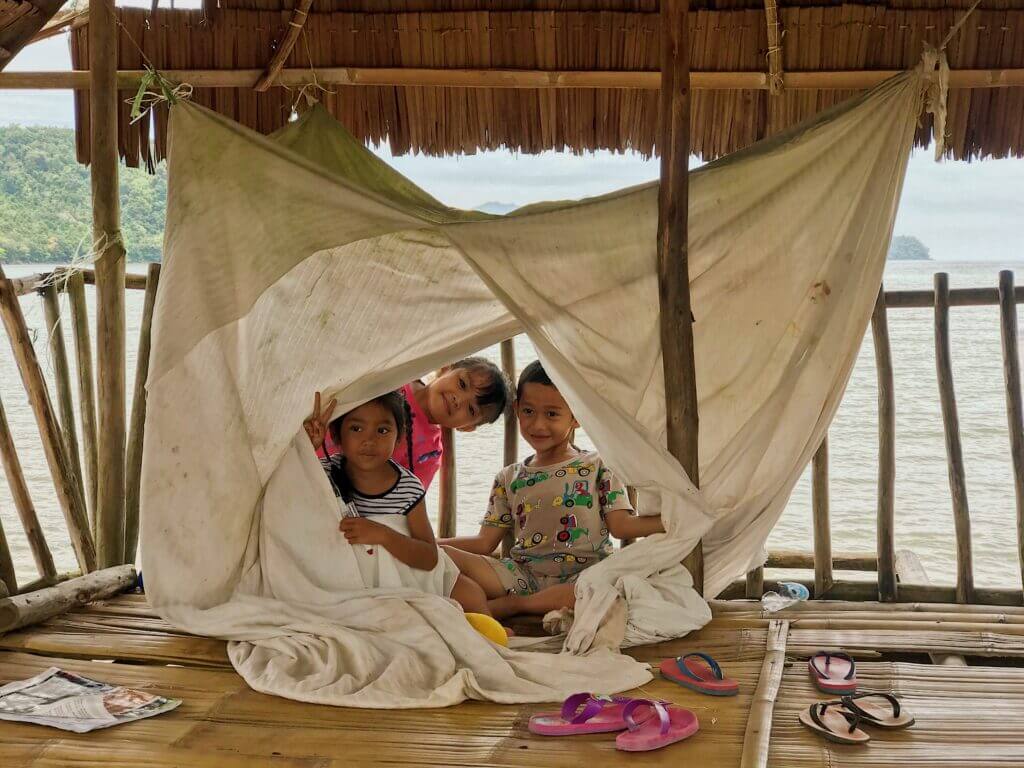
On our way back to the Dragon Pearl Beach Resort (where we stayed during our trip), we met three children, bashfully hiding their faces behind a cream crumpled fabric when they saw us. There was a group of kids also on the other side, I found two of them were licking lollipops, and the rest weren’t. So, I asked where is the nearest store? The only thing I could do at the moment was offer them twenty lollipops. Not until the village was out of my sight, it surprised me when the kids shouted a goodbye. I stood looking down from the top of the hill waving, and my heart was throbbing.
During our final night at Kampung Pituru, I spoke to a gentleman named Lin, who commutes to and fro Kota Kinabalu every day where he works. The words he spoke will stay with me for a long time as I think about the future generation of this beautiful village: “We hope our children are able to live at least one level better that what we’ve been given.”
Editor’s note: In April 2022, Ambassadors spent a weekend in the village of Pituru Laut, Kota Belud, Sabah – a small fishing village located almost 2 hours away from the city of Kota Kinabalu. During their visit, Ambassadors spent their time with the village youths and elders where they learned more about the impacts of overfishing and climate change on the community’s livelihood. These Climate Stories are inspired by their time at Kampung Pituru Laut.


